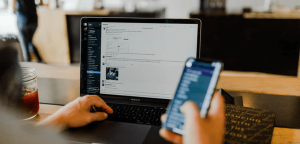3 Forms of Municipal Government

Modern urbanization has resulted in population shifts away from rural agrarian lifestyles to the busy city streets of metropolitan development. Provisions to accommodate such population centers require planning, organization and maintenance. Large numbers of people living and working in relatively close quarters present challenges that become the responsibilities of local government.
Municipalities often employ large workforces to handle activities that enable many of the services and functions within their boundaries. For example, city water department employees may be responsible for operating a valve maintenance system to ensure fire hydrants and other water supply systems remain operational. Other examples of these kinds of functions include law enforcement, garbage collection and electric utilities.
Government, at the local level, takes on different forms. Three dominant organizational structures have emerged over time as the most effective approach to city governance.
Commission Local Government
City commissions are the oldest form of local government in the US. Over time this structure has fallen out of favor giving way to more effective models. Commissions are generally a small body of directly elected officials, with each commissioner having a specific scope of responsibilities. For example, one commissioner may have managerial authority over the city police force while another is responsible for the fire department. One commissioner may be designated as mayor or chairman to facilitate meetings.
Council and Manager Local Government
This structure has become the most popular model in recent times, with many municipalities having populations exceeding 10,000 residents adopting it. A city council is comprised of elected members and administers a budget and establishes policies. Council members interview and hire a city manager who handles daily operational functions in the city.
Mayor and Council Local Government
An election determines the mayoral post separately from the council in this model. The authority and decision-making powers vested in the mayor’s position varies as determined by the council. The elected council typically also retains responsibility for establishing local code and ordinances.
Management of local governments is accomplished by utilizing different structures of elected and appointed officials. The functions of municipal governance primarily involve operations and maintenance of local-level resources to meet residents’ needs. As populations have shifted into cities, local management models have evolved to effectively handle growing responsibilities.





![Unlocking Real Estate Success [Company Name] Unlocking Real Estate Success [Company Name]](https://images.unsplash.com/photo-1583142499515-db3e66a57bdc?fm=jpg&q=60&w=3000&ixlib=rb-4.1.0&ixid=M3wxMjA3fDB8MHxzZWFyY2h8N3x8cmVhbCUyMGVzdGF0ZSUyMGludmVzdG1lbnQlMjBjb21wYW55fGVufDB8MHwwfHx8Mg%3D%3D)


